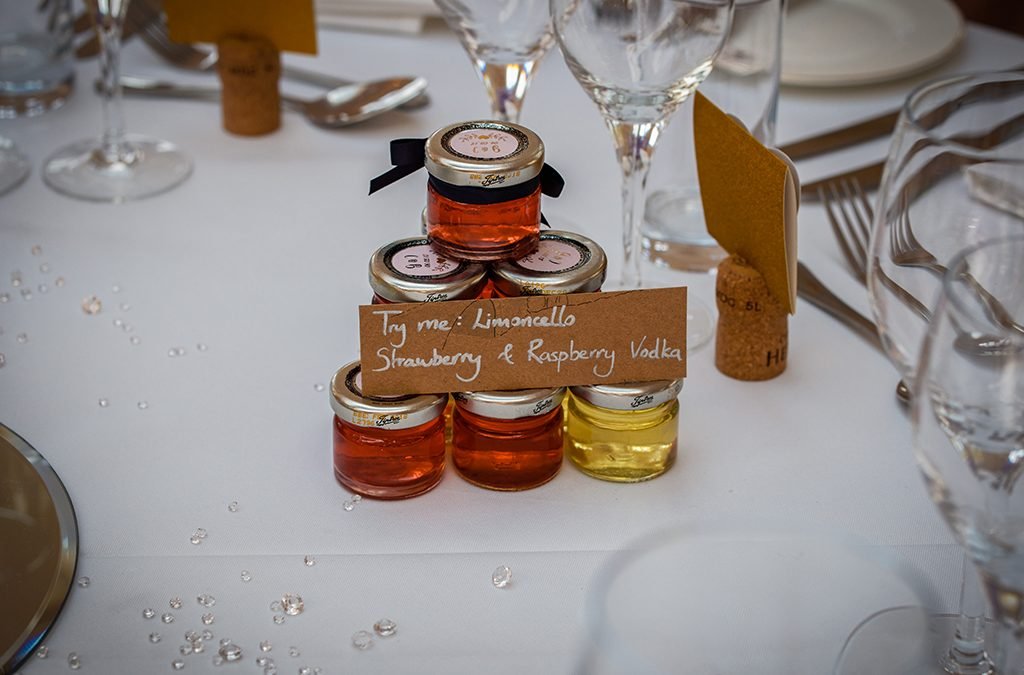Wedding Favours for your day
Wedding favours, long-standing tradition that has been part of weddings for centuries. These small gifts are given to guests as a way to thank them for attending the wedding and to express gratitude for their support and well wishes. In
this article, we will take a closer look at the history of favours and how they have evolved over time.
The Origin of Wedding Favours
The custom of giving favours dates back to ancient times, when couples would give guests small bags of sweets or confections as a symbol of their love and appreciation. In ancient Rome, for example, couples would give their guests small boxes filled with sugar-coated almonds called confetti. These sweet treats were believed to bring good luck and fertility to the couple and their guests.
During the Middle Ages, the tradition of giving favours became more widespread, as couples would give guests small trinkets or keepsakes as a symbol of their love and appreciation. These favours often featured religious motifs, such as miniature crosses or icons, and were meant to serve as a reminder of the wedding ceremony and the couple’s commitment to each other.
The Evolution of Wedding Favours
As weddings became more elaborate and sophisticated in the modern era, so too did the tradition of giving wedding favours. In the 19th century, for example, couples would give guests small gifts such as snuff boxes or miniature paintings as a way to express their gratitude and to commemorate the occasion.
In the 20th century, favours evolved once again, as couples began to give guests more personalised and meaningful gifts. Some couples would give guests small potted plants or packets of flower seeds as a way to symbolize the growth and flourishing of their relationship, while others would give guests handcrafted items such as candles or soap as a way to express their creativity and individuality.
Today, wedding favours come in a wide range of shapes and sizes, from edible treats like chocolates and cookies to practical items like bottle openers and keychains. Many couples choose to personalise their wedding favours with their names and wedding date, or to incorporate elements from their wedding theme or colour scheme.
Conclusion
The tradition of giving favours has a long and rich history, and has evolved over time to reflect changing social and cultural values. Whether simple or elaborate, traditional or modern, wedding favours remain an important way for couples to express their gratitude and appreciation to their guests on their special day.
Photos of the small wedding details are also wonderful to have.
Wedding Favours
Wedding favours, long-standing tradition that has been part of weddings for centuries. These small gifts are given to guests as a way to thank them for attending the wedding and to express gratitude for their support and well wishes. In
this article, we will take a closer look at the history of favours and how they have evolved over time.
The Origin of Wedding Favours
The custom of giving favours dates back to ancient times, when couples would give guests small bags of sweets or confections as a symbol of their love and appreciation. In ancient Rome, for example, couples would give their guests small boxes filled with sugar-coated almonds called confetti. These sweet treats were believed to bring good luck and fertility to the couple and their guests.
During the Middle Ages, the tradition of giving favours became more widespread, as couples would give guests small trinkets or keepsakes as a symbol of their love and appreciation. These favours often featured religious motifs, such as miniature crosses or icons, and were meant to serve as a reminder of the wedding ceremony and the couple’s commitment to each other.
The Evolution of Wedding Favours
As weddings became more elaborate and sophisticated in the modern era, so too did the tradition of giving wedding favours. In the 19th century, for example, couples would give guests small gifts such as snuff boxes or miniature paintings as a way to express their gratitude and to commemorate the occasion.
In the 20th century, favours evolved once again, as couples began to give guests more personalised and meaningful gifts. Some couples would give guests small potted plants or packets of flower seeds as a way to symbolize the growth and flourishing of their relationship, while others would give guests handcrafted items such as candles or soap as a way to express their creativity and individuality.
Today, wedding favours come in a wide range of shapes and sizes, from edible treats like chocolates and cookies to practical items like bottle openers and keychains. Many couples choose to personalise their wedding favours with their names and wedding date, or to incorporate elements from their wedding theme or colour scheme.
Conclusion
The tradition of giving favours has a long and rich history, and has evolved over time to reflect changing social and cultural values. Whether simple or elaborate, traditional or modern, wedding favours remain an important way for couples to express their gratitude and appreciation to their guests on their special day.
Photos of the small wedding details are also wonderful to have.

